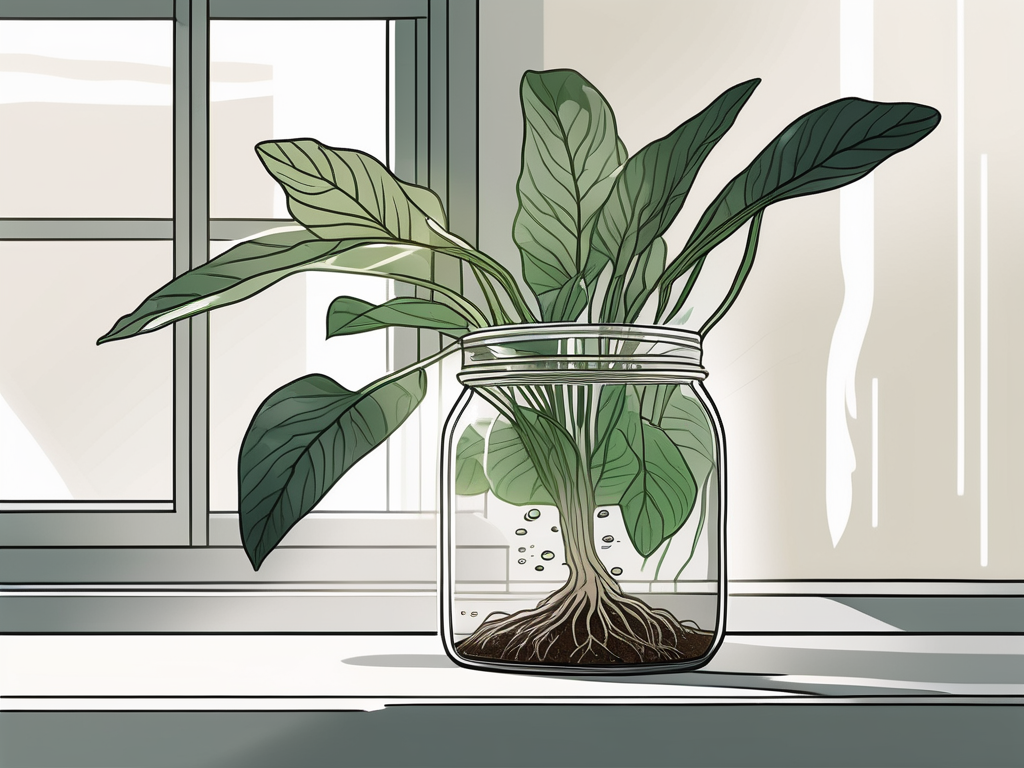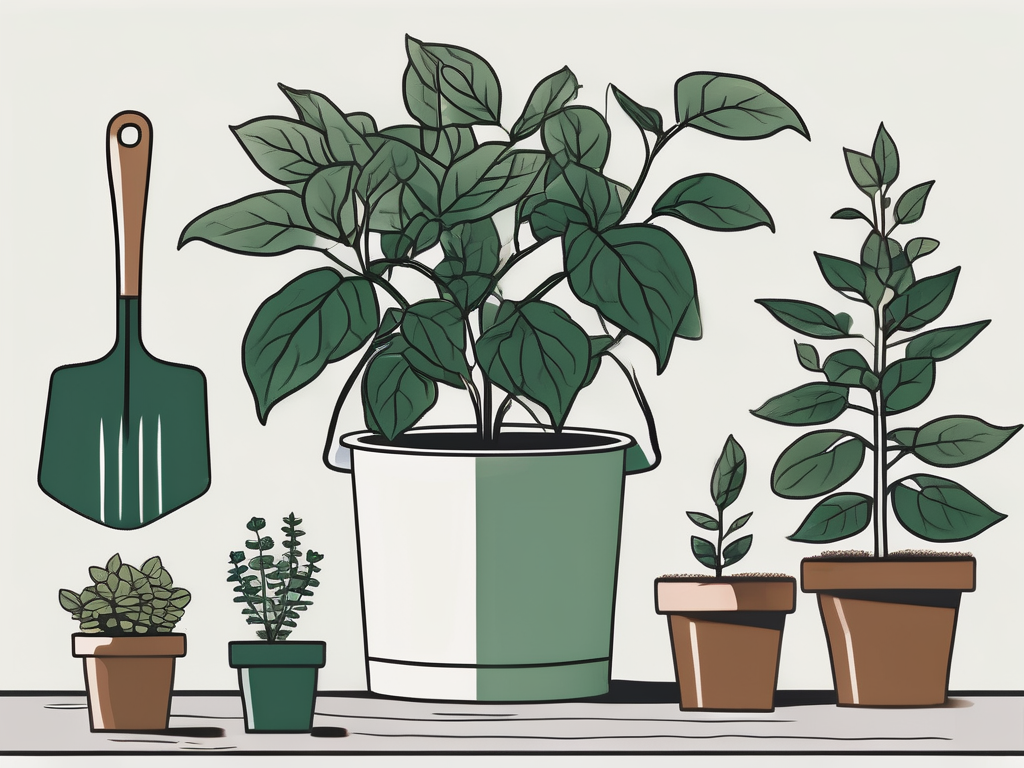
Chinese Evergreen, also known as Aglaonema, is a popular houseplant that's not only admired for its lush foliage but also for its resilience and easy-going nature. One of the fun aspects of having this plant in your home is the ability to propagate it. If you're curious about expanding your plant family without spending a dime, then propagating your Chinese Evergreen in water might just be the perfect project for you!
In this article, we'll walk you through the process of propagating Chinese Evergreen in water. We'll cover everything from choosing the right stem cutting to ensuring your new plant thrives once it's been transferred to soil. Whether you're a seasoned plant parent or new to the green scene, there's something here for everyone.
Why Propagate Chinese Evergreen?
Before we get into the nitty-gritty of propagation, let's talk about why you might want to propagate your Chinese Evergreen in the first place. For starters, it's an economical way to grow your plant collection. Rather than buying new plants, you can create new ones from what you already have. It's like getting more bang for your buck!
Another reason many plant lovers are drawn to propagation is the satisfaction of nurturing a plant from its infancy. There's something incredibly rewarding about seeing those first roots sprout and watching a new plant grow. Plus, propagated plants make for thoughtful gifts that have a personal touch.
Lastly, propagating your plants can help you maintain their health. Sometimes, a parent plant becomes too leggy or overcrowded. By propagating, you're essentially giving it a haircut, which can encourage new growth and rejuvenate the plant.
Choosing the Right Stem Cutting
The first step in propagation is selecting the right stem cutting. This is crucial because a healthy cutting increases the chances of successful propagation. Here's what you should look for:
- Healthy Leaves: Choose a stem with vibrant, healthy leaves. Avoid anything with yellowing or browning, as this might indicate an unhealthy or stressed plant.
- Mature Stem: Look for a mature stem that is firm and sturdy. Younger stems might not have developed enough to root properly.
- Node Presence: Make sure the stem has at least one node. Nodes are the knobby parts of the stem where leaves, roots, and branches emerge.
Once you've identified a suitable stem, use a sterilized pair of scissors or pruning shears to make a clean cut just below a node. Aim for a cutting that's about 4-6 inches long.
Preparing Your Cutting
Now that you have your cutting, it's time to prepare it for water propagation. This step is all about setting your cutting up for success, so take your time and follow these tips:
- Remove Lower Leaves: Trim off any leaves that would be submerged in water. Leaves left in water can rot, leading to bacterial growth that might harm your cutting.
- Optional Rooting Hormone: While not necessary, dipping the cut end of the stem in rooting hormone can encourage faster root development. This is especially helpful if you're new to propagation or if you've had trouble with it in the past.
With your cutting prepared, you're ready to move on to the next step: placing it in water.
Setting Up Your Propagation Station
Creating the right environment for your cutting is key to successful propagation. Here's how to set up your propagation station:
- Choose a Container: Opt for a clear glass or jar so you can easily monitor root growth. It doesn't have to be fancy—a recycled jar works just fine!
- Fill with Water: Use room temperature, filtered or distilled water to avoid any chemicals that might be in tap water.
- Position the Cutting: Place the cutting in the jar, ensuring that the node is submerged but the leaves are above the waterline.
- Location, Location, Location: Find a spot with indirect sunlight. Direct sunlight can be too harsh and might lead to algae growth in the container.
And just like that, your propagation station is all set up! Now comes the waiting game, but don’t worry, we’ve got tips to keep you occupied in the meantime.
Monitoring Root Growth
Watching for roots is an exciting part of the propagation process, akin to waiting for bread to rise or cookies to bake. But instead of delicious treats, you're rewarded with new plant growth! Here's what to look for as your cutting develops:
- Initial Growth: In about 2-4 weeks, you should start to see tiny roots emerging from the nodes. This is a great sign that your cutting is on its way to becoming a full-fledged plant.
- Healthy Roots: Healthy roots are white or light-colored and firm. If you notice any dark or mushy roots, these should be trimmed away to prevent rot.
- Root Length: Wait until the roots are about 1-2 inches long before transferring the cutting to soil. This ensures the plant is strong enough to handle the transition.
While you're monitoring root growth, remember to change the water every week or so to keep it fresh. This helps prevent bacteria and algae from taking over.
Transferring to Soil
Once your cutting has a nice set of roots, it's time to transfer it to soil. This step can be a little nerve-wracking, but with a bit of care, your plant should adjust beautifully. Here’s how to do it:
- Choose the Right Pot: A small pot with drainage holes is ideal for your young plant. You can always upgrade to a larger pot as it grows.
- Prepare the Soil: Use a well-draining potting mix. You can even add some perlite to improve drainage further.
- Planting: Make a small hole in the soil and gently place the cutting, ensuring the roots are covered. Lightly press the soil around the base to secure it.
- Watering: Give the plant a good drink of water after planting. Then, let the top inch of soil dry out before watering again.
Place your newly potted plant in a location with indirect sunlight and watch it continue to thrive.
Common Issues and Troubleshooting
Propagation can sometimes come with its share of hiccups, but don't let that discourage you. Here are a few common issues you might encounter, along with some troubleshooting tips:
- Yellowing Leaves: This might indicate overwatering or too much direct sunlight. Adjust your watering schedule or move the plant to a shadier spot.
- No Root Growth: If you don’t see roots forming after a few weeks, try changing the water more frequently or moving the cutting to a slightly warmer spot.
- Rotting Roots: This can happen if the water isn't changed regularly. Trim away any rotting roots and refresh the water.
Remember, every plant is unique, and sometimes you'll need to experiment a bit to find what works best for your Chinese Evergreen.
Benefits of Water Propagation
Water propagation is a popular choice for many plant people, and for good reason. Here are some of the benefits that make this method so appealing:
- Visibility: One of the biggest advantages is that you can easily see root growth, which lets you monitor progress and address any issues quickly.
- Minimal Mess: Since you’re not dealing with soil initially, there’s less mess involved. This makes it a great option for those who might not have a dedicated gardening space.
- Beginner-Friendly: Water propagation is relatively straightforward, making it an excellent choice for beginners.
Water propagation is also a great way to engage kids or friends in the plant-growing process, as they can observe the changes happening over time.
Integrating New Plants into Your Home
Once you’ve successfully propagated your Chinese Evergreen, you might be wondering how to incorporate your new plants into your home decor. Here are a few ideas:
- Group Display: Arrange several plants together to create a lush, green corner. Vary the heights and textures for visual interest.
- Floating Shelves: Use floating shelves to display your plants at different heights. This not only saves floor space but also adds a vertical element to your decor.
- Hanging Planters: If you're short on space, hanging planters are a great way to add greenery without cluttering surfaces.
Don't be afraid to get creative! Plants can be a lovely addition to any room, bringing life and color to your home.
Sharing the Love
One of the joys of propagating plants is sharing them with others. Here are a few ways you can spread the plant love:
- Gift a Plant: A propagated plant makes a thoughtful and personal gift for friends or family.
- Plant Swaps: Host or participate in a plant swap, where you can trade cuttings with fellow plant lovers.
- Community Events: Get involved in local gardening groups or events where you can share your knowledge and plants.
Sharing plants is not only a wonderful way to connect with others but also helps introduce more people to the joys of indoor gardening.
Final Thoughts
Propagating Chinese Evergreen in water is a simple and rewarding way to expand your plant collection and share your love of gardening. With the right steps and a little patience, you’ll be well on your way to creating a thriving indoor jungle.
At Cafe Planta, we love helping you care for your plants and grow your plant family. If you have any questions or need advice, feel free to email us or send us a DM on Instagram. We’re here to support you on your plant journey and excited to see how your home blossoms with new life!












